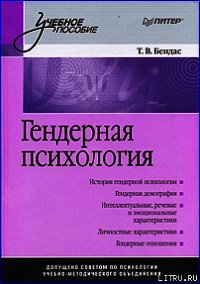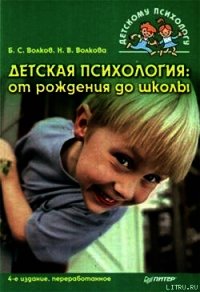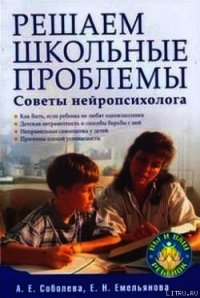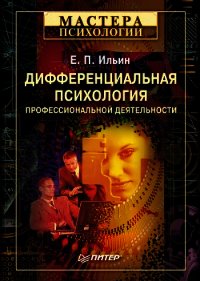Психология творчества, креативности, одаренности .. - Ильин Евгений Павлович (книги без регистрации TXT) 📗
Kohler G., Ruch W. Sources of variance in current sense of humor inventories: How much substance, how much
method variance? // Humor. International Journal of Humor Research. 1996. V. 9 (3–4). P. 363–397. Koppel M. A., Sechrest L. A multitrait-multimethod matrix analysis of sense of humor // Educational and
Psychological Measurement. 1970. V. 30 (1). P. 77–85.
Kostik M. M. A study of transfer: sex differences in the reasoning process // J. educ. Psychol. 1954. V. 45.
P. 449–458.
Kuhl J. Action control: The maintance of motivational states // F. Hallish, J. Kuhl (eds.). Motivation,
intention and action. Berlin. Springer. 1985. P. 279–292. Langly P., Johns R. A computational model of scintific insight // R. Sternberg, T. Tardif (eds.). The nature
of creativity. Cambridge. Cambridge University Press. 1988. P. 177–201. Leach P. L. A critical study of the literature concerning rigidity // Brit. J. Soc. and Clin. Psychol. 1967.
V. 6. № 1. P. 11–12.
Lehman H. C. The chronological ages of greatest productivity chemist, inventors, poets et altera //
Psychological Bulletin. 1935. V. 2. № 9. Lehman H. C. The creative years. Medicine, surgery and certain related fields // Scientific Monthly. 1941. V. 52. Lehman H. C. Average at time and achievement versus longevity // American Journal of Psychology.
1951. V. 64. P. 534–547. Lehman H. C. Age and Achievement. Princeton. Princeton University Press. 1953. Lehman H. C. The influence of longevity upon curves showing man's creative production rate at succercive
age and levels // Journal of Gerontology. 1958. V. 13. P. 178–191. Letzel I. W., Philip W. L. Creativity and intelligence. NY. 1968.
Lewicki P., Hill T., Czyzewska M. Nonconscious aquisition of information // American Psychologist. 1992.
V. 47. № 6. P. 796–801.
LiJ. Creativity in horizontal and vertical domains // Creativity Research Journal. 1997. V. 10. P. 107–132. Li R. A theory of conceptual intelligence: Thinking, learningand giftedness. NY. Praeger Publishers. 1996. Lieberman M. D. Intuition: A social cognitive neuroscience approach // Psychological Bulletin. 2000. V. 126. № 1. P. 109–137.
Loehlin J. C. Genes and environment in personality development. Newbery Park, Ca. Sage. 1992. Lubart T. I., Getz I. Emotion, metaphor and the creative process // Creativity Research Journal. 1997. V. 10. № 4. P. 285–301.
Lubart T. I., Sternberg R.J. An investment approach to creativity: Theory and data // S. M. Smith, T. B. Ward, R. A. Linke (eds.). The creative cognition approach. Cambridge, MA. MIT Press. 1995.
Ludwig A. M. The price of greatness: Resolving the creativity and madness controversy. NY. London. The Guilford Press. 1995.
Lytton H. Creativity and education. London. Rotledge and Kegan. 1971.
Mace C. The Psychology of Study. London. Penguin Books. 1962.
MacCabe M. P. Influence of creativity and intelligence on academic performance // Journal Creative
Behavior. 1991. V. 25 (2). P. 116–122. McGrae R. Creativity, divergent thinking and openness to experience // Journal of Personality and Social
Psychology. 1987. V. 52. № 6. P. 1258–1265. MacKinnon D. W. The Nature and Nurture of Creative Talent // American Journal of Psychology. 1962.
V. 17.
MacKinnon D. W. Personality and the realization of creative potential // American Psychologist. 1965.
V. 20. P. 273–281.
MacKinnon D. W. The personality correlates of creativity: A study of American architects // P. E. Vernon
(ed.). Creativity, L. 1972. P. 289–311. Madigan C. O., Elwood A. Brainstorm and thunderbolts. NY. Macmillan. 1984.
Manturzewska M. Musical talent in the ligth of biografical research // Musikalische Begabung finden und forden. Bosse. 1986.
Manturzewska M. A biografical study of the life-span development of professional musicians //
Psychology of Musik. 1990. V. 18. P. 112–139. Marsh R. L., Landau J. D., Hichs J. I. How examples may (and may not) constrain creativity // Memory
and Cognition. 1996. V. 24. № 5. P. 669–680. Martindale C. Personality, situation and and creativity // J. A. Glover, R. R. Ronning, C. R. Reynolds
(eds.). Handbook of creativity. NY. Plenum. 1989. P. 211–232. Martindale C., Greenough J. Evalution of training in creative problem-solving test // Journal of genetical
psychology. 1973. V. 123. № 2.
Martindale C. Creativity and connectionism // S. M. Smith, T. B. Ward, R. A. Finke (eds.). The creative
cognition approach. Cambridge, MA. Bradford. 1995. P. 249–268. Martindale C. et al.Creativity, oversensitivity and rate of habituation // Personality and Individual
Differences. 1996. V. 20. P. 423–427. Maslow A. H. Creativity in self-actualising people // H. H. Anderson (ed.). Creativity and its cultivation.
NY. Harper. 1959.
Mayer R. E. Thinking, problem solving, cognition. NY. W. H. Freeman. 1983.
Meadow A., Parners S. J. Evaluation of training in creativity problem-solving test // Journal appel.
Psychology. 1959. V. 43.
Mednick S. A. The associative basis of the creative process // Psychological Review. 1962. V. 69. № 2.
P. 220–232.
Mednick S. A., Mednick M. T. An associative interpretation on the creative process // C. W. Taylor (ed.).
Widenigh horisonts in creativity. 1964. Menuchin Y. Unfinished journey. London. MacDonald and Janes. 1979.
Miller G. A., Galanter E. H., Pribram H. H. Plants and the structure of Behavior. NY. Holt. 1960.
Moles A. La creation scientifique. Geneve. 1957.
Moles A. Methodologie de la creation scientifique. Paris. 1963.
Monass J. A., Engelhard J. A. Jr. Home environment and the competitiveness of accomplished individuals in four talent fields // Developmental Psychology. 1990. V. 26. P. 264–268.
Moneta G. A model of scientist's creative potential // Psychology. 1993. V. 6 (1). P. 23–37.
Monsk F. J. Development of gifted children: The issue of identification and programming // F. J. Monsk (ed.). Talent for the future. Assen. Van Gorcum. 1992. P. 191–202.
MumfordM., Gustafson S. Creativity syndrome: integration, application and innovation // Psychological
Bulletin. 1988. V. 103. P. 27–43.
Murdock M. C., Ganim R. M. Creativity and humor: Integration and incongruity // Journal of Creative
Behavior. 1993. V. 27 (1). P. 57–70. Myers D. G. Intuition: The powers and perils of inner knowing. New Haven, CT. Yale University Press. 2002. Napier H. S. Individual versus group learning: Note on two tasks variables // Psychological Report. 1968.
V. 23 (3). Pt. 1. P. 757–768. Nelson H. The creative years // American Journal of Psychology. 1928. V.40.
Nichols J. G. Development of perception of own attainment and causal attribution for success and failure
in reading // Journal of Educational Psychology. 1979. V. 71. P. 94–99. Nichols R. C. Twin studies of ability, personality and interest // Homo. 1978. V. 29. Noble K. D. The dilemma of the gifted woman // Psichological Women Quarterly. 1987. V. 11. P. 367–378. Norton R., Domen G. Gifted children // The Elementary School Journal. 1984. № 3. Oberg W. Age and achievement man // Popular Science Monthly. 1903. P. 359–377. Olshen S. R. The disappearance of giftedness in girls: An intervention strategy // Roeper Review. 1987.
V. 9. P. 251–254.
Osbeck L. M. Conceptual problems in the development of psychological notion of «intuition» // Journal
of Theory Social Behavior. 1999. V. 29. № 3. P. 229–250. Osborn A. F. Applied Imagination: Principles and Procedures of Creative Thinking. NY. Scribner. 1948. O' Quin K., Derks P. Humor and creativity: A review of the empirical literature // M. A. Runco (ed.). The
creativity handbook. NY. Hampton Press. 1997. Pacini R., Epstein S. The relation of retional and experiential information processing styles to personality,




